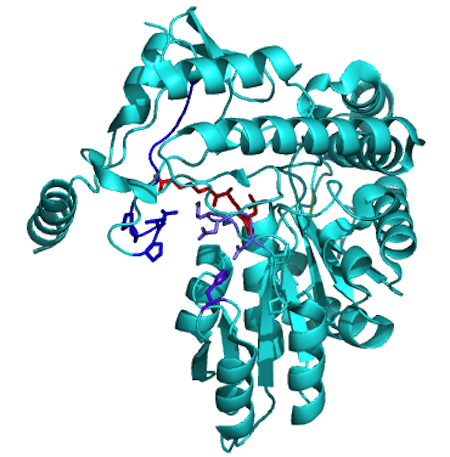 Evolution
Evolution
 Intelligent Design
Intelligent Design
Researcher Says Protein Evolution Is "Close to a Miracle"

I really like the candidness of the essay, "Close to a miracle," by Rajendrani Mukhopadhyayover in the American Society for Biochemistry and Molecular Biology publication ASBMB Today. It starts by acknowledging that researchers really don’t know how sophisticated structures like the modern protein shown above ever arose. As one researcher put it:
"Once you have identified an enzyme that has some weak, promiscuous activity for your target reaction, it’s fairly clear that, if you have mutations at random, you can select and improve this activity by several orders of magnitude," says Dan Tawfik at the Weizmann Institute in Israel. "What we lack is a hypothesis for the earlier stages, where you don’t have this spectrum of enzymatic activities, active sites and folds from which selection can identify starting points. Evolution has this catch-22: Nothing evolves unless it already exists." (Emphasis added)
The article goes on to discuss why the problem is so hard, making a tour of prominent researchers’ opinions about ways to escape the catch-22 described above. It’s all pretty hypothetical, and relies on circumstances and conditions not now in evidence. Hmmm.
Perhaps the author of the essay, and Dr. Tawfik, have their doubts too. The article closes with this:
Overall, what the field of protein evolution needs are some plausible, solid hypotheses to explain how random sequences of amino acids turned into the sophisticated entities that we recognize today as proteins. Until that happens, the phenomenon of the rise of proteins will remain, as Tawfik says, "something like close to a miracle."
Yup.
